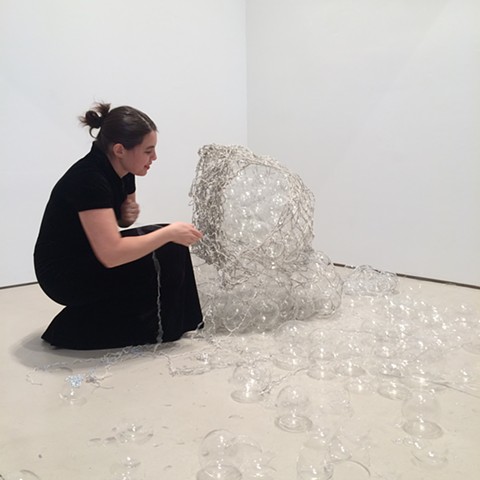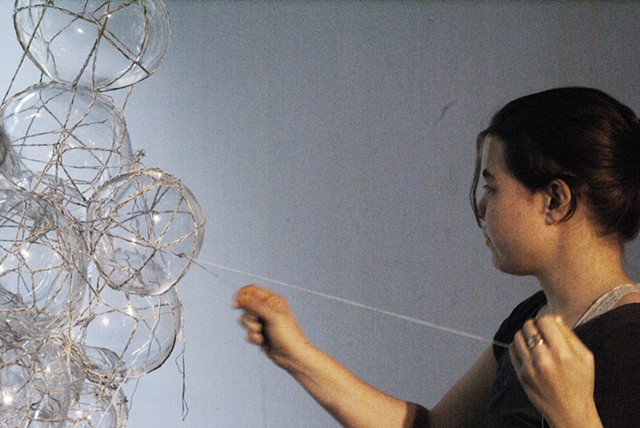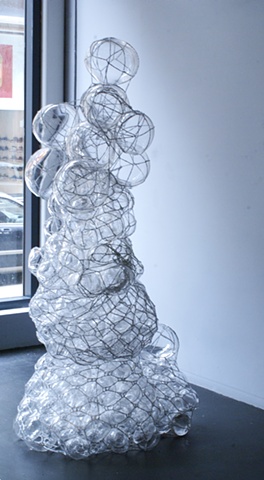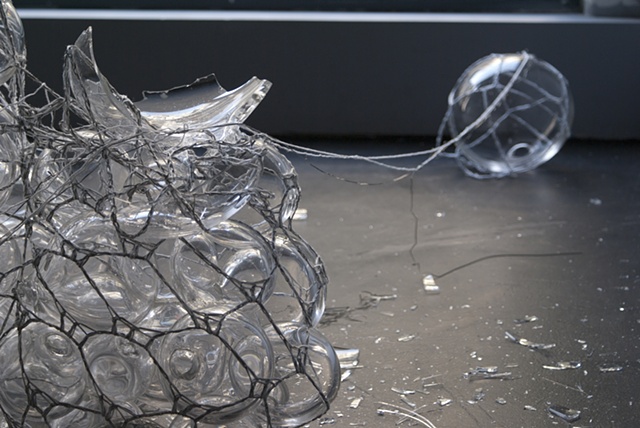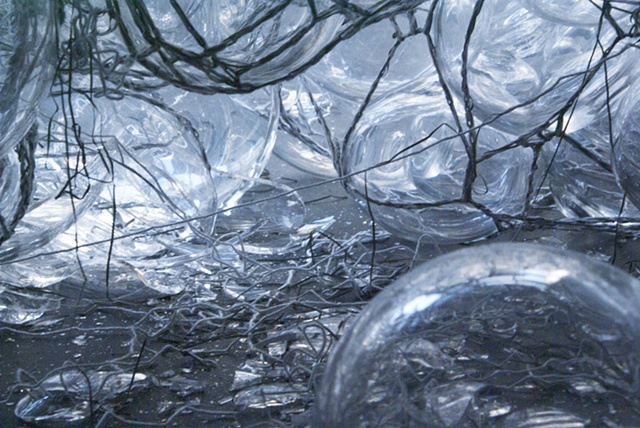Disruption
The first technique any student of glass blowing learns is how to make a parison—a molded glass bubble. This bubble is the preliminary shape formed in the process of blowing cups, plates, bowls, and other objects. To ensure the functionality of the desired vessel, this bubble must have a thick bottom and a thin top. As a student at the Rhode Island School of Design, Alexandra Ben Abba spent hours perfecting her glass bubbles. After accumulating innumerable translucent parisons unsuitable for functional use, she began using them to build abstract sculptures. Her interest in the static form of these sculptures—held in place by a net of crocheted yarn—quickly lost its grip as the solid yet fragile nature of glass and its reflective qualities engaged her artistic impulse. What resulted was a series of performances that undermined her original impetus for producing bubbles. In Disruption, Ben-Abba unravels the crocheted net holding the sculpture in shape and allows its glass innards to split and shatter to the floor. In so doing, process transforms from method into performance, and destruction is celebrated in the failure of function.
The floor is strewn with broken glass and masses of torn yarn, clumped and unraveling. Something happened here. Something happened that transformed a contained structure—an evenly crocheted web with an assertive shape—into a menacing heap of razor-sharp scatter. Disruption happened. Disruption (2011/2016), is a performance, and it asserts the significance of the physical in the artistic process. The physical—conveyed by actions like crocheting and glass blowing—is inherent to artistic processes that employ craft materials. It carries tactility, sensuality, and intimacy and imprints the mark of the maker. It is this somatic relationship between artist, material, and process that uniquely binds creatives in the field of craft.
- By Rebecca Pristoop
